|
Treemonisha’s opening scene introduces audiences to the opera’s first two hoodoo elements: bags of luck and goofer dust. Although viewers and listeners cannot overlook Zodzetrick, the conjuror, many people today have little familiarity with hoodoo practices and materials. Because the opera centers on education’s battle against hoodoo superstitions, background knowledge of these traditional beliefs and practices not only enhance our understanding of characters, words, and actions, but also help us recognize Joplin’s familiarity with these superstitions and the care with which he brings that familiarity to life on stage. Bags of Luck In 1860, several decades before Joplin puts luck bags center stage, D. R. Hundley described this common conjurors’ talisman. "What their 'medicine is composed of,” Hundley wrote in Social Relations in Our Southern States, “we do not know. They generally tie it up in little dirty rags. . . They believe it to possess wonderful powers, and that it will protect them against every species of misfortune." Variously known as gris gris, luck bags, conjure bags, tricker bags, tobys, and mojos, these magic bags have been compared to Kikongo language good luck tobe charms or nkisi, described as raffia bags containing medicine (bilongo), such as stones and soil, and a soul (mooyo). As Yale art historian Robert Farris Thompson explains in Flash of the Spirit: African and Afro-American Art and Philosophy, these contents represent the earth and the spirit." Together they are believed to combine to give the hoodoo bag "life and power." One can guess that the synonyms toby and mojo derive from the Kikongo tobe and mooyo.
'Gord afo' me' Gord ahine me, Gord be wid me. May dis ball fetch all good luck ter Charles Leland. May hit tie down all debbils, may hit bine down 'is innemies afo' 'im, may hit bring um undeh 'is feet. May . . . hit bring 'im faithful frens, may hit bine um to 'im. May hit bring 'im honeh, may hit bring 'im riches, may hit bring 'im 'is haht's desire. May hit bring 'im success in evveht'ing he hondehtakes, may hit bring 'im happiness. I ax foh hit in de name ob de Gord.' A Shreveport newspaper provides strikingly similar information when it prints the note ironically found inside a jailed itinerant conjuror’s luck bag: I, M. W. Hilliard, do, in the name of the Father, in the name of the Son and in the name of the Holy Ghost, put together the following articles as a charm of good luck . . . in any and all undertakings, every and all times, home or abroad, white and black and all nations; to protect me from all prisons and enemies; to rule everybody, both women and men, without fail. May be liked by all the white people, both women and men in all four corners of the world, to make everybody friendly to me, and love and protect and assist me, in any danger, should any arise, and, which I hope will be to keep all negroes under my feet so that they cannot hurt me at all; to make all officers my best friends, and may I rule all courts and come out conqueror. --Shreveport Times, June 21, 1893 Certainly Hilliard and his type could easily have passed from place to place, traveling by land or navigating the Red River. The distance between Shreveport and Texarkana barely exceeds sixty miles. Ozark folklorist Vance Randolph spoke of this hoodoo tradition’s survival in the state in which Joplin set his opera: "Negroes in Arkansas make and sell charms to keep husbands constant, to bring back wandering lovers, to help in seducing girls, and so on. Whatever the conjurors' work, good or evil, believers eagerly purchased their wares. "If you feel that some one is really after you and is about to get you, you had better see a root doctor and get some powdered 'yarbs' tied in a bag," advised one of the freedmen quoted in The Southern Workman ( 41:4; April 1912). According to a variety of sources ranging from Hyatt to online hoodoo sites, bags intended solely to bring good luck to an individual were often carried in a pocket or worn on the body whereas bags intended to protect one from harm were typically hung over the door to ward off danger. In this position, they were believed to act upon all who entered or exited the house. Among the hoodoo men populating vaudeville houses and musical theater and within this context of surviving Africanisms, Scott Joplin introduced his hoodoo men. As Treemonisha opens, one of these conjurors offers his wares to Treemonisha's adoptive mother Monisha and tells her how to use it: I want to sell to you dis bag o' luck, Although hoodoo bags were traditionally custom-made because each of their contents was believed to possess unique powers, Joplin's conjuror implies that his bag will adapt to Monisha's needs. She asks, "Will it drive away de blues and stop Ned from drinkin' booze?” Eager to make a sale, the quick-witted conjuror transforms her question into an affirmation: "It will drive de blues, I'm thinkin’, and stop Ned from booze-drinkin'." Monisha reaches for the bag until stopped by Ned, who admonishes, "No, dat bag you'se not gwine to buy" and demands of the conjuror, "You's a stranger to me. Tell me who are you?" The conjuror gives his name and occupation: " Zodzetrick—I am de Goofer dus' man." Goofer Dust In the Houston Grand Opera's 1975 production, Zodzetrick, whose unusual name may be partially explained by the term tricker bag and the fact that spells were also called tricks, repeatedly sprinkled glitter over other performers. Although staging demanded a substance visible in the lights, this choice of goofer dust lends a whimsical feel to the production, now preserved on video--much like Tinkerbell's twinkling "pixie dust" in Disney's Peter Pan. So is goofer dust simply a nonsense term—a comic touch? Absolutely not. In Flash of the Spirit, Robert Farris Thompson points out that the term "harks back to the Ki-Kongo verb kufwa (‘to die’)." Although derived from a verb, goofer was commonly used as a noun referring to grave dirt or graveyard dirt. Charles W. Chesnutt's 1899 The Conjure Woman was well-known to turn-of-the-century readers. In this collection, a clever former slave, Julius McAdoo, repeatedly attempts to hoodwink a naïve Northern white couple buying the abandoned vineyard from which he has earned his living since white owners had abandoned the plantation, just as had the owners in Joplin's opera. In "The Goophered Grapevine," one of these tales, old Julius informs the couple that the vines have been "goophered,--conju'd, bewitch' " with "de mos' powerfulles' kin' er goopher,--could make people hab fits, er rheumatiz, er make 'em des dwinel away en die."
Another of Hyatt's informants points out that goofer dust had skeptics and believers: "See lota people don't believe in it, but colored peoples do believe in it." Other informants point out that such hoodoo works only on believers. Thus, if superstitious people such as those Joplin portrays learn from the more educated Treemonisha to reject hoodoo beliefs, they will be safe from harm.
Yet, Hurston does not stop there. Instead, she cautions, "Listen to some men of science on the same subject": Dr. Domingo Foriero of Rio de Janeiro, "If each corpse is the bearer of millions of organisms specific of ill, imagine what a cemetery must be in which new foci are forming around each body! More than twenty years after the death of a body, Shane found the germs of yellow fever, scarlatina, typhoid and other infectious diseases." In Treemonisha, pointing out his power, Zodzetrick brags, "I's king of Goofer dust land." With this claim, Joplin not only further establishes Zodzetrick's potential threat, but also places him in the company of many other conjurors, for hoodoo doctors frequently claimed kingship, royal lineage, or other prominent positions. In Mary Alicia Owens’ Voodoo Tales, Aunt Mymee's luck-ball "was the work of 'King' A----. “ Described as “a cunjurer of great powers and influence " and also referred to as "'king' of occult 'cussedness,'" King A----“ was King Alexander, a local conjuror whom Owen repeatedly interviewed and who shared his knowledge with her. A 1912 issue of the New York Sun reported the arrest of King Harrison in Jennings, Louisiana. Head of the Sanctified Church, Harrison was accused of having "reverted to the bloodiest practices of darkest Africa, rivaling anything in voodoo lore" and causing the deaths of twenty-four people. William Wells Brown depicts Old Dinky in My Southern Home; Or, the South and Its People (1880), a semi-autobiographical account mixing fact and fiction. Claiming to be “a descendant of a king,” Old Dinkie lived out his life on the plantation without working and without interference because everyone feared his hoodoo powers. Charles Chesnutt, writing "The Conjurer's Revenge," speaks of a "cunjuh man" who said "his daddy wuz a king, er a guv'ner, er some sorter w'at-you-may-call-em 'way ober yander in Affiky." There may have been some truth to such claims, especially since younger generations often learned conjury from their parents or grandparents. In The Golden Bough (1922), Sir James Frazer explains that magicians often evolved into chiefs. For example, speaking of various tribes in West, Central, and East Africa, he mentions that two of three chiefs in one area where "dreaded as magicians" and referred to other chiefs as "nothing but sorcerers destitute of direct political influence." Wrapping up his discussion of the lack of "strict distinction between chief and medicine-man," he offers his thoughts about the rise of African kings: The foregoing evidence renders it probable that in Africa the king has often been developed out of the public magician, and especially out of the rainmaker. The unbounded fear which the magician inspires and the wealth which he amasses in the exercise of his profession may both be supposed to have contributed to his promotion. Joplin’s king of goofer dust land turns to leave after Treemonisha’s adoptive father rejects him., but his departure doesn't yet mean that the people are safe from his powers.
When eighteen-year-old Treemonisha dares to stand up to Zodzetrick as he turns to go, trouble ensues. Joplin introduces the first of the opera’s most easily overlooked or misunderstood hoodoo elements. The conjuror's immediate reaction and other details that follow it in quick succession will form the basis of the next blog entry. Comments are closed.
|
AuthorI am a retired community college professor and the great-granddaughter of composer, orchestrator, arranger, organist, and teacher William Christopher O'Hare. Click the "Read More" link to see each full blog entry.
Archives
November 2020
Categories
All
|
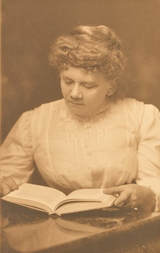
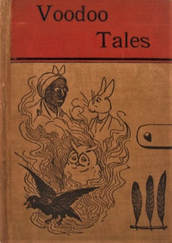
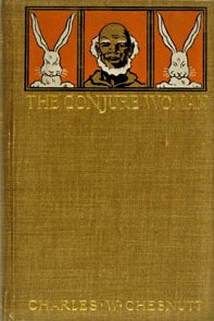
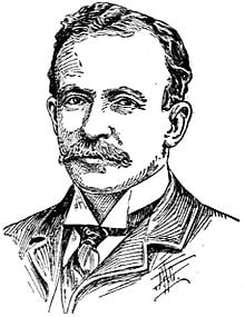
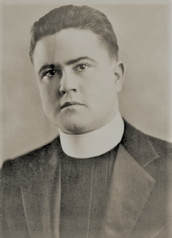
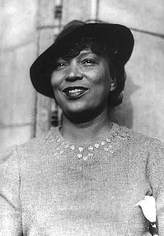
 RSS Feed
RSS Feed